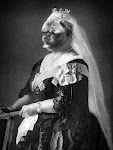Just a short two weeks away (give or take a few days), the Kansas City Symphony will open its 2011-2012 season in its new home, The Kauffman Center for the Performing Arts. This astounding edifice will literally put Kansas City on the musical map. Some coastal snorts probably think it is just a new boondoggle built by us locals to keep some workers employed and to make our town look like we are in the big leagues. But not so the Kauffman (please DO NOT start calling it "The K" like the stadium), which is truly a top rank performing arts venue. The new season is chock full of favorites and crowd pleasers to ensure the capacity crowds (just try to get a decent ticket for some concerts) come back for more but also features some more interesting and rarely heard pieces that I will not want to miss. This is the first of a couple two or three posts on what I think are some of this season's more off beat "must hear" works.
I am not a big fan of Brahms. Yes, it is true...and I know 99.9873% of those who read this are. But I just have never warmed to the big, heavy, foursquare, unadventurous, monotone works that Johannes produced. However, there are a couple that intrigue me mainly because they are the antithesis of the above. Someone must have been listening to me whine, since one was on last season's Kansas City Symphony calendar, the charming and delicate "Alto Rhapsody" for Alto, Men's Chorus and Orchestra. This January, frequent guest Asher Fisch will present Brahms' Piano Quartet op 25 as orchestrated by Arnold Schoenberg (who thought Brahms was a progressive genius by being regressive... or something like that) along with a future off-beat must hear selection, the discarded "Blumine" movement from Mahler's Symphony # 1 in a concert that will probably not pack in the crowds like October's German Requiem (don't ask my opinion) will.
Brahms composed his first Piano Quartet in 1861. Compared to what Liszt, Wagner, Berlioz were doing (and even some of the late chamber works of Beethoven), it was positively old fashioned. Brahms did succeed in writing a grand piece, symphonic in scope and length but hampered by the restrictions of his ensemble.
Schoenberg argued that Brahms was progressive since he tended to make use of frequently limited and tightly controlled thematic material, much like Schoenberg's 12 tone system. However, in his orchestral works, Brahms was far from a colorful or delicate orchestrator and therein lies the tale. The constricted material needs some color and contrast to effectively show off how brilliant it really can be. Unlike the dour Johannes, Schoenberg could take a 3 or 4 note cell (his student Webern could too) and with his masterful orchestration and tight control over dynamics and texture make it seem like an unchained melody. Schoenberg liked the Op 25 Quartet, heard the symphony hiding within that Brahms could or would not hear (Brahms famously took a while to get up the nerve to actually write a full orchestral symphony) and set to work orchestrating it for full orchestra in 1937.
Schoenberg did not change a single note of the original score, but he sometimes radically altered Brahms' compositional style. Far from just adding splashy color, Schoenberg's orchestration illustrates Brahms' finely wrought melodies and motives and emphasizes the symphonic scope of Brahms' original work. Relying less on a typical Brahmsian string dominated texture, Schoenberg used brass (including some pretty raucous trombones and trumpets) to double the whole melodic line rather than simply introduce them to reinforce a climax . Winds are more prominent as well. Schoenberg's used the definitely non-Brahmsian xylophone in his recasting of the "Rondo alla Zingarese" fourth movement to great effect. Like seeing a cleaned fresco or a colorized film, new details emerge that not only changes the appearance but gives a fresh perspective to the art.
The work is in four movements, again another example of its symphonic yearnings. The opening Allegro is a study in contrasting themes (5 of them) that benefit greatly from the expanded palate. The second movement is a gentle Intermezzo; Schoenberg uses extensive pizzicato in this movement to bring out some usually hidden rhythmic details. The slow movement's march section comes to full life with the full brass and percussion, giving it some gravitas that the quartet can never match. Using contrasting string techniques of Schoenberg's inventive use of strings and winds brings highlights the powerful forward motion mixed easily with quiet delicacy in the final pages of this movement, missing in the more monochrome original. In the style of his Hungarian Dances, the finale dances and sings with bright percussion, braying brass, skittering winds and clashing cymbals, you almost want to shout "Huzzah!" at the end , caught up in the colorful, propulsive dance.
Those who love Brahms and the few of us that do not will love this arrangement. Like a jailer with a key, Schoenberg unlocked the gates, giving the imprisoned notes their freedom to dance and soar for a time.
Mahler "Blumine" from Symphony # 1
Mozart Concerto for Piano # 17 (Asher Fisch Conductor and Soloist)
Brahms-Schoenberg Piano Quintet # 1 op 25
January 13, 14 and 15 Helzberg Hall
Sunday, September 11, 2011
Subscribe to:
Post Comments (Atom)



No comments:
Post a Comment